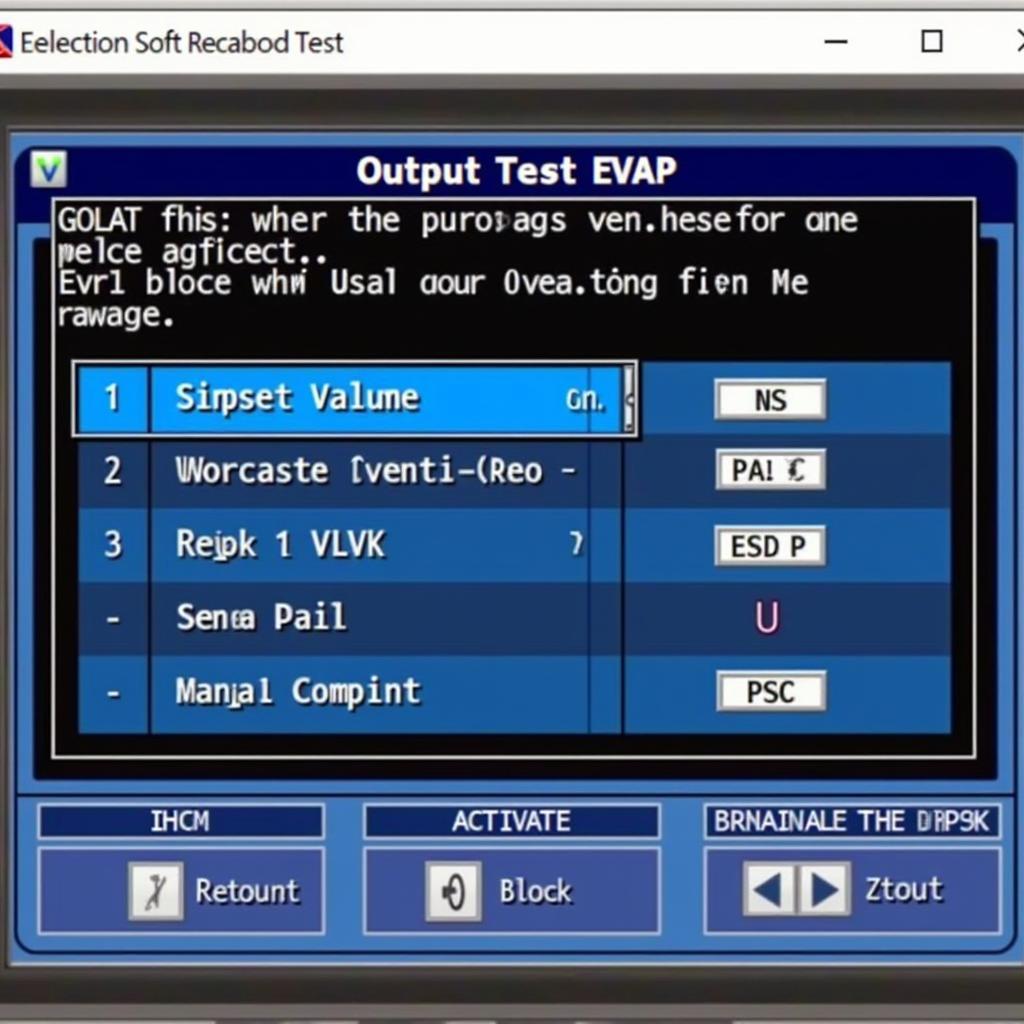Your cart is currently empty!

Mastering the EVAP Valve Test with VCDS
The dreaded “check engine” light can be a source of anxiety for any car owner. Often, the culprit is a fault within the Evaporative Emission Control (EVAP) system, and pinpointing the issue requires a diagnostic tool like VCDS. This comprehensive guide delves into the intricacies of performing an evap valve test vcds, empowering you to diagnose and troubleshoot EVAP system problems effectively.
A properly functioning EVAP system is crucial for preventing fuel vapors from escaping into the atmosphere. It’s a complex network of components, including the EVAP canister, vent valve, purge valve, and various hoses and sensors. When a component malfunctions, it can trigger a diagnostic trouble code (DTC), illuminating that pesky check engine light. Using VCDS, a powerful diagnostic software for Volkswagen, Audi, Seat, and Skoda vehicles, allows you to access detailed information about the EVAP system and perform targeted tests.
Understanding the EVAP System and its Components
The EVAP system captures fuel vapors from the fuel tank and stores them in the charcoal canister. When the engine is running, the purge valve opens, allowing the engine to draw in these stored vapors and burn them during combustion. This process not only reduces emissions but also improves fuel efficiency. The vent valve regulates the pressure within the system, ensuring optimal performance. A malfunction in any of these components can lead to leaks, pressure imbalances, and ultimately, a DTC.
Similar to vcds fault code 16486, understanding the specific codes related to the EVAP system is critical for accurate diagnosis. Each code corresponds to a specific fault, guiding you towards the problematic component.
Performing an EVAP Valve Test with VCDS
Before initiating the test, ensure the vehicle is parked on a level surface with the engine off. Connect the VCDS interface to the vehicle’s OBD-II port and launch the software.
- Select “Select Control Module.”
- Choose “01-Engine.”
- Go to “Output Tests.”
- Locate the specific test for the EVAP component you suspect is faulty (e.g., “EVAP Purge Valve” or “EVAP Vent Valve”).
- Follow the on-screen prompts to activate the component. You should hear a distinct click or change in engine idle if the component is functioning correctly.
This process allows you to isolate the problematic component and determine whether it requires replacement or further diagnosis.
 VCDS EVAP Test Screenshot
VCDS EVAP Test Screenshot
Interpreting the Results and Troubleshooting
If the component fails to activate during the output test, it indicates a potential fault. This could be due to a wiring issue, a faulty component, or a blockage in the system. Further diagnosis might involve checking the wiring harness for damage, testing the component’s resistance with a multimeter, or inspecting the EVAP system for leaks or blockages. For instance, you can check vcds hvac measuring blocks for similar diagnostic approaches.
“A common mistake is assuming a DTC automatically means a component needs replacing,” says John Miller, a seasoned automotive electrical engineer. “Thorough testing with VCDS is essential to avoid unnecessary part replacements.”
Common EVAP System Issues and Solutions
Several issues can plague the EVAP system, ranging from loose gas caps to faulty purge valves. Understanding these common problems and their solutions can save you time and money. Sometimes, issues similar to a 2012 beetle evap test vcds scenario might arise.
- Loose or Damaged Gas Cap: A loose or damaged gas cap is the most common cause of EVAP system leaks. Ensure the cap is tightened securely after refueling.
- Faulty Purge Valve: A malfunctioning purge valve can prevent the engine from drawing in fuel vapors, leading to performance issues and DTCs. Replacing the purge valve is usually the solution.
- Clogged Vent Valve: A clogged vent valve can disrupt the pressure balance within the EVAP system. Cleaning or replacing the vent valve can resolve this issue.
Just as with vcds mode 7 pending emissions related fault codes, addressing pending codes promptly can prevent future problems.
“Regular maintenance and timely repairs are crucial for keeping the EVAP system in optimal condition,” adds Sarah Johnson, an automotive technician with over 15 years of experience. “Addressing minor issues before they escalate can prevent costly repairs down the road.”
Conclusion
Performing an evap valve test vcds is a crucial step in diagnosing and resolving EVAP system issues. By understanding the system’s components, using VCDS effectively, and interpreting the results accurately, you can maintain your vehicle’s emissions control system and keep that check engine light at bay. For further assistance, feel free to connect with us. Our phone number is +1 (641) 206-8880 and our email address: vcdstool@gmail.com and our office is located at 6719 W 70th Ave, Arvada, CO 80003, USA. You can also find valuable resources like golf 5 hot start fix vcds on our website, vcdstool.com.
by
Tags:
Leave a Reply